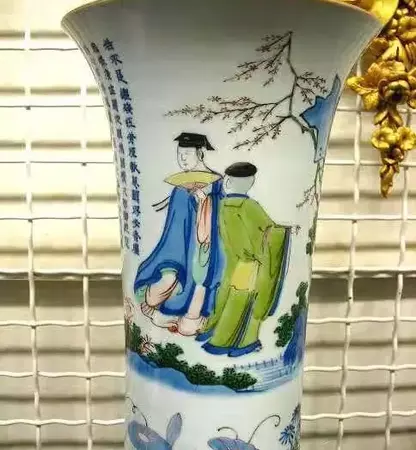Editor: When you appreciate the images on Chinese antique porcelain, such as the one above, do you normally take them as simple as ‘some figures and surroundings’? Have you ever been intrigued to find out what the story scenes were about? Have you found that antique porcelains painted with famous story scenes are usually valued higher than others? Well, let’s invite Dr Yibin Ni, a renowned art historian born in Shanghai, China, to tell us the love story during the transition from Sui to Tang dynasty depicted on this yen-yen vase.
featured image above: blue-and-white porcelain vase (detail), Kangxi period (1662-1722), Qing dynasty, courtesy of National Gallery of Victoria, Melbourne, Felton Bequest, 1947. Photo: National Gallery of Victoria, Melbourne
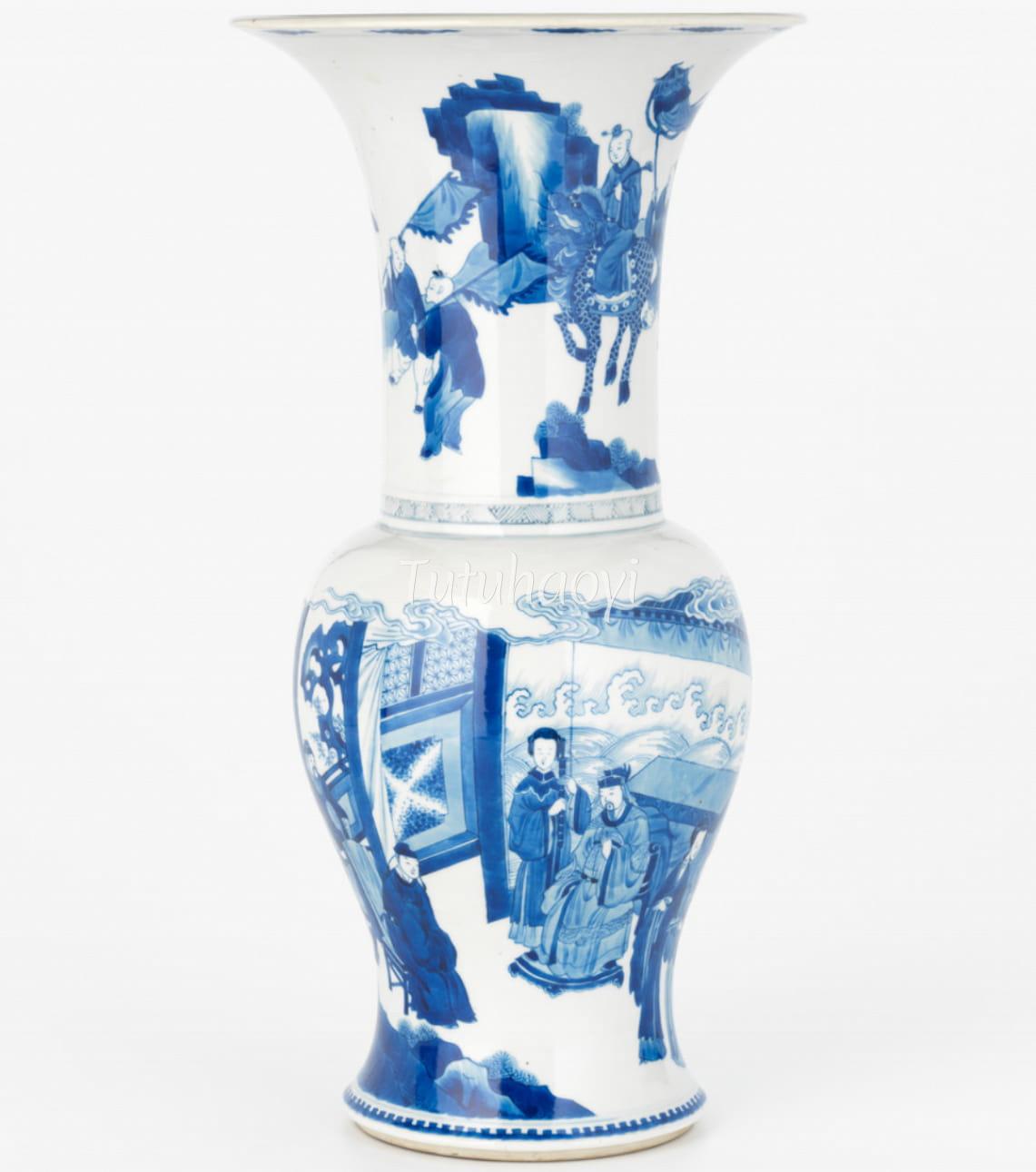
With strategic plans to restore the war-torn country back to order, the talented scholar Li Jing (李靖) was paying a visit to the powerful Lord Yang Su (杨素), who enjoyed luxurious ways of living and female company around him. To Li Jing’s disappointment, Lord Yang did not take his plans seriously. However, Red Fly Whisk (红拂女 hongfu nv as nickname, real name 张凌华), an exceptionally beautiful maiden who was present at the meeting, immediately fell head over heels for Li Jing, while Li was passionately airing his ambitious views to Lord Yang.
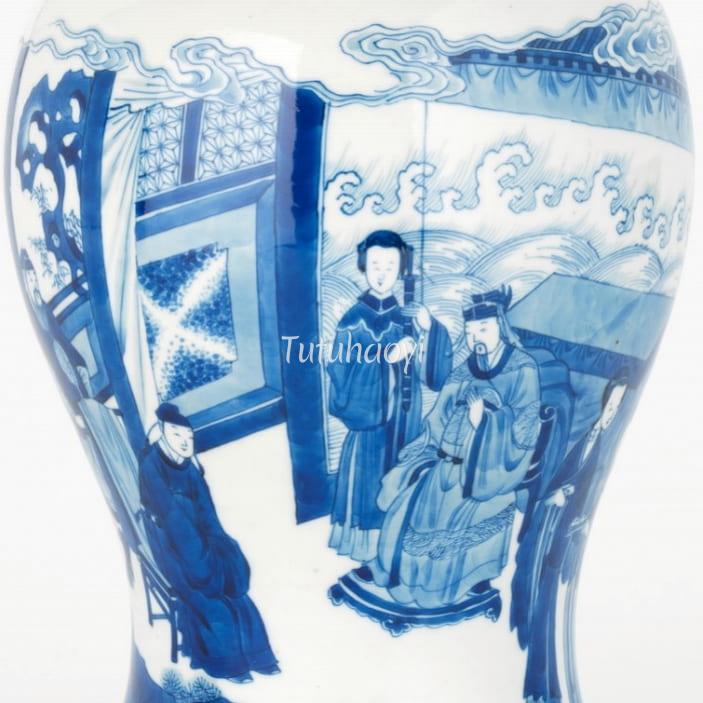
This blue-and-white yen-yen vase in the collection of the National Gallery Victoria in Melbourne bears the scene (张娘心许) of this fascinating meeting on its belly. However, the official website uses only five words to describe this scene: ‘figures in interior with garden’.
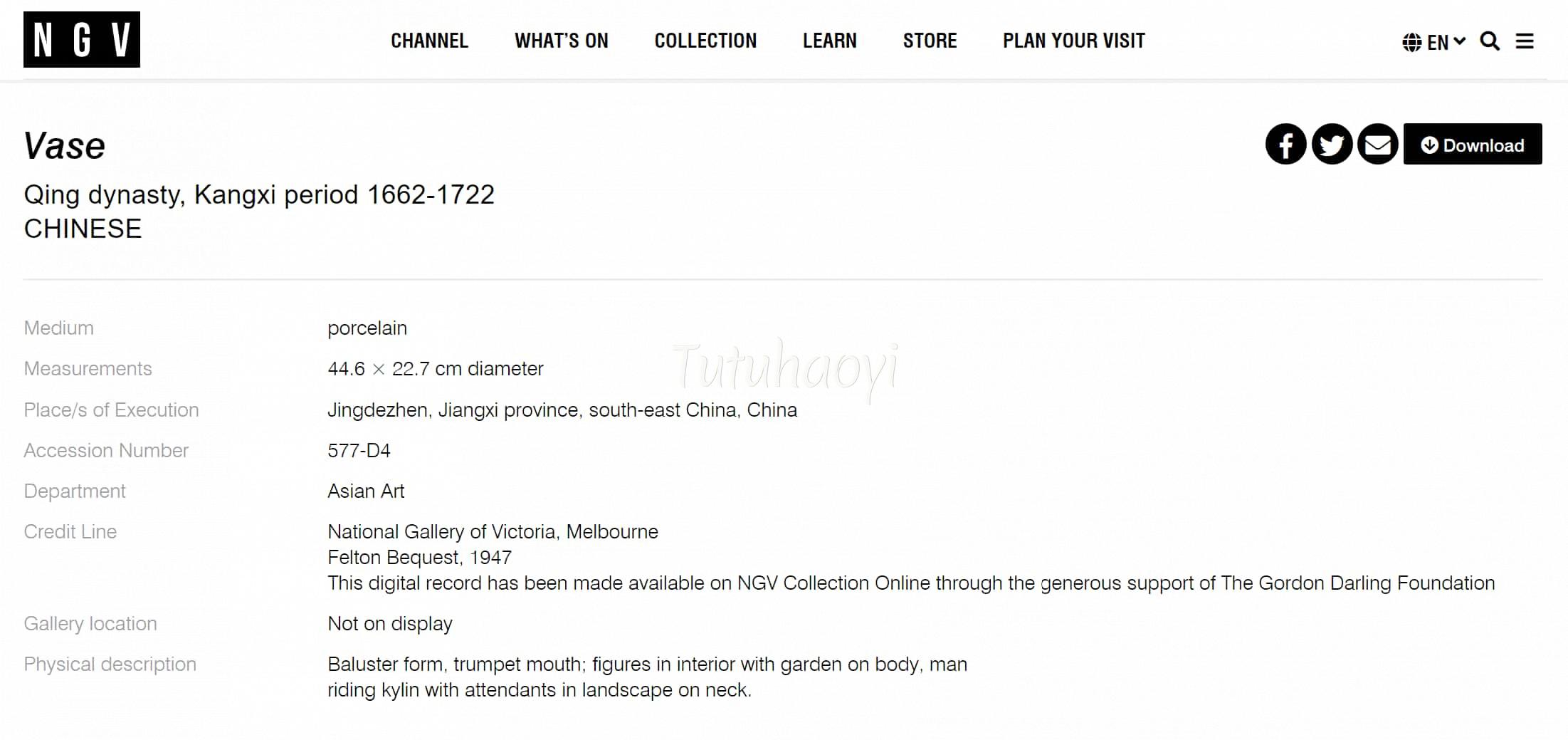
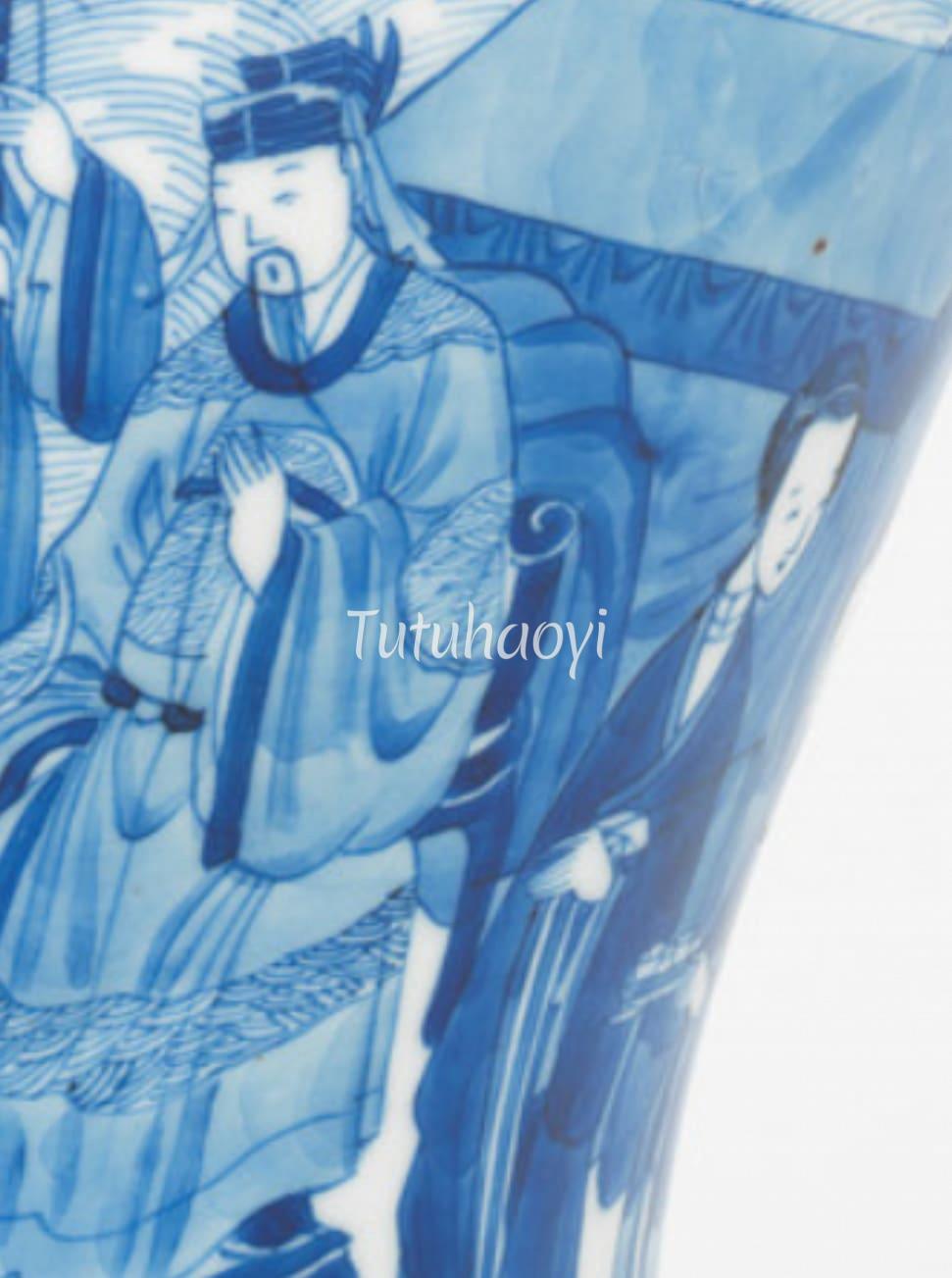
On the NGV vase, the maiden who holds a red fly whisk is on the right and can hardly be seen in the photo. Actually, she is turning away from Li Jing because a maiden’s shyness in front of a stranger is lauded as conforming to traditional propriety, as is shown on the pear-shaped vase in Shanghai Museum.

清康熙 青花开光人物故事图瓶 高44 口径5.8 足径12.1 图47-汪庆正《上海博物馆藏康熙瓷图录》两木出版社 1998年 (124页)
However, porcelain painters may have different social backgrounds and some are more adventurous than others. A Yongzheng famille-rose jar bears a version of the scene in which the obviously interested maiden is leaning towards the direction of Li Jing and her feelings for him are written all over her face!
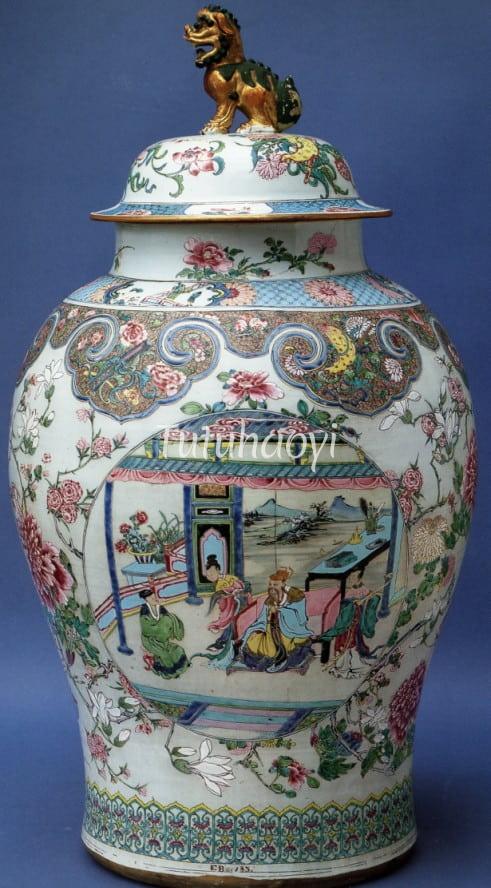

Reference for the above two images: tall jar with lid, Yongzheng period (1723 – 1735), famille-rose ware, H: 85 cm, Nationalmuseet, Department of Ethnography, Copenhagen (EBc 183), in Qing Porcelain: famille verte, famille rose 1644–1912, Michel Beurdeley & Guy Raindre, New York: Rizzoli, 1986, cat. 132. The description reads ‘The body of the jar is decorated with a medallion containing a number of figures’.
The findings and opinions in this research article are written by Dr Yibin Ni.






